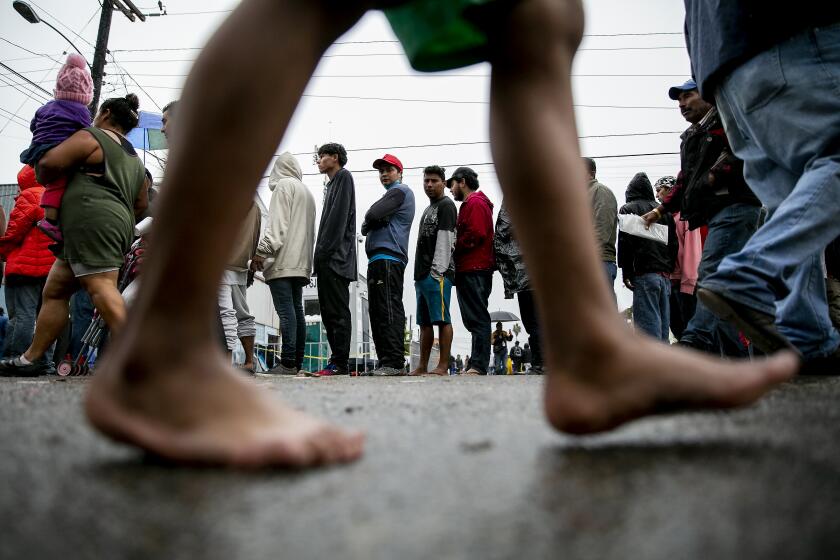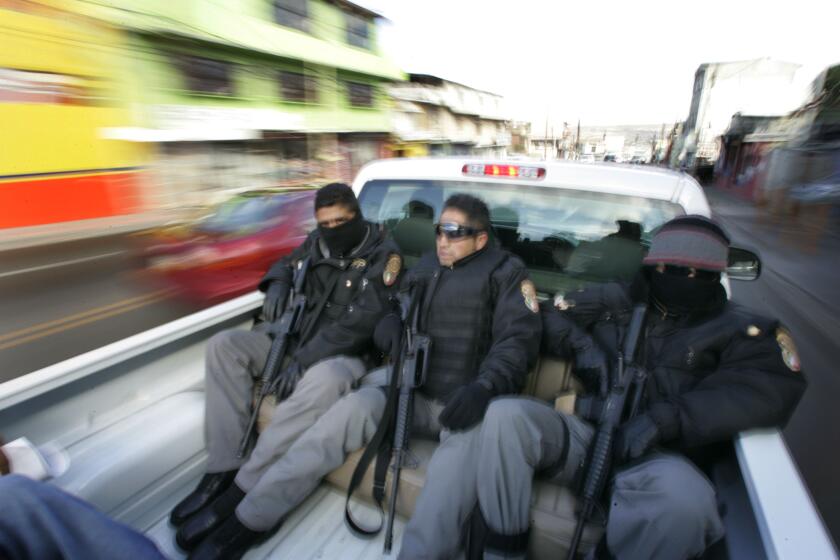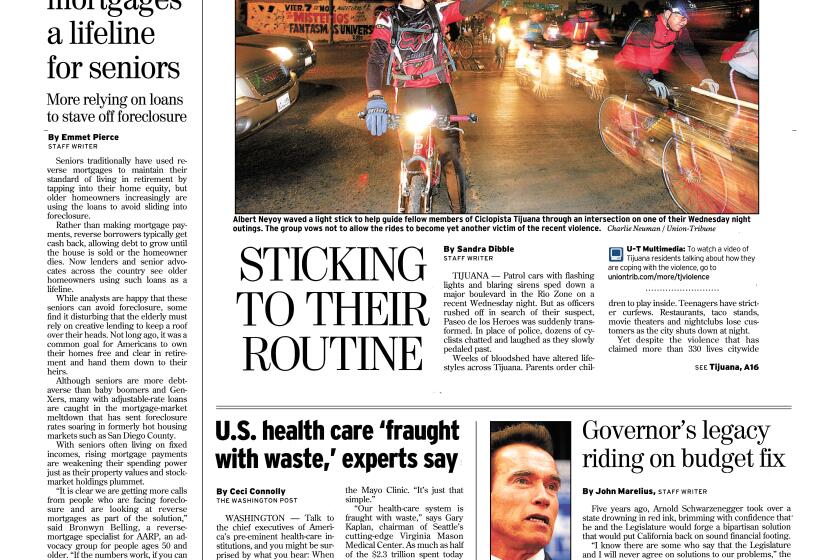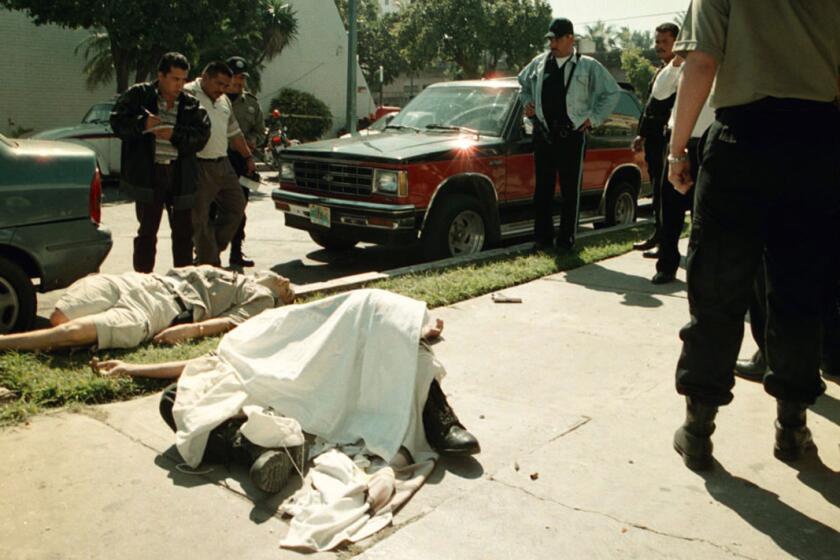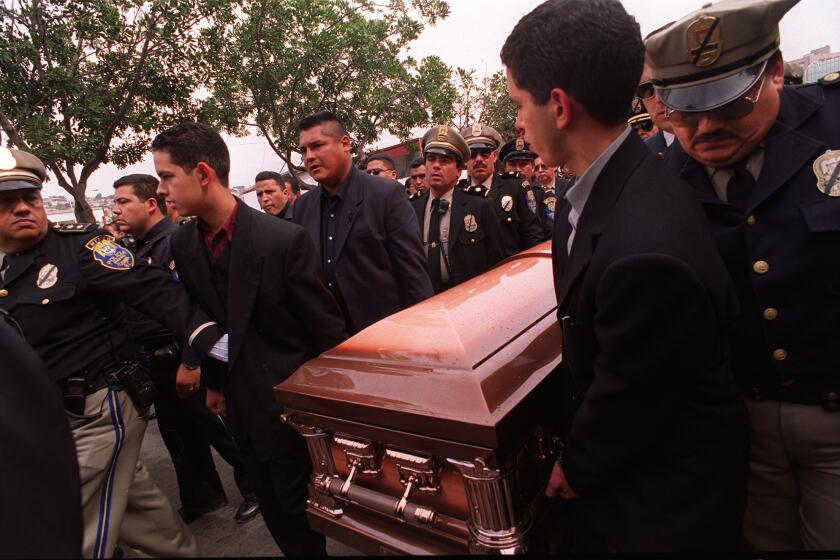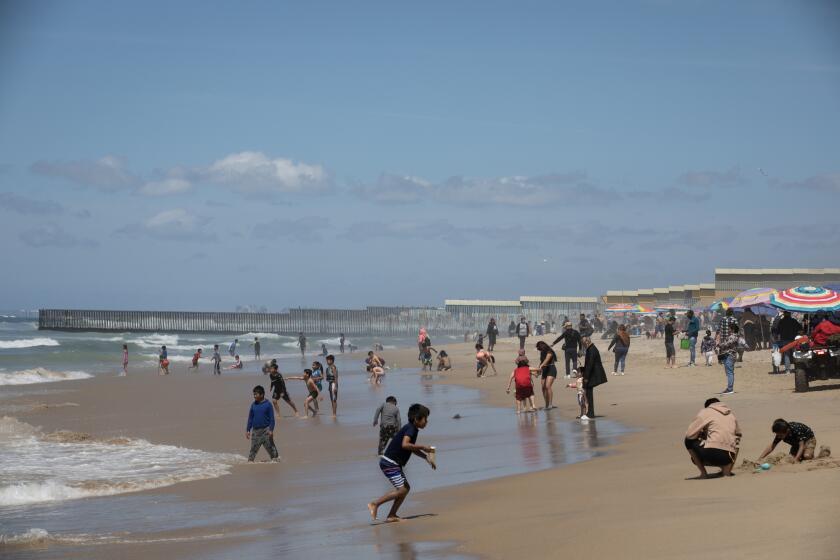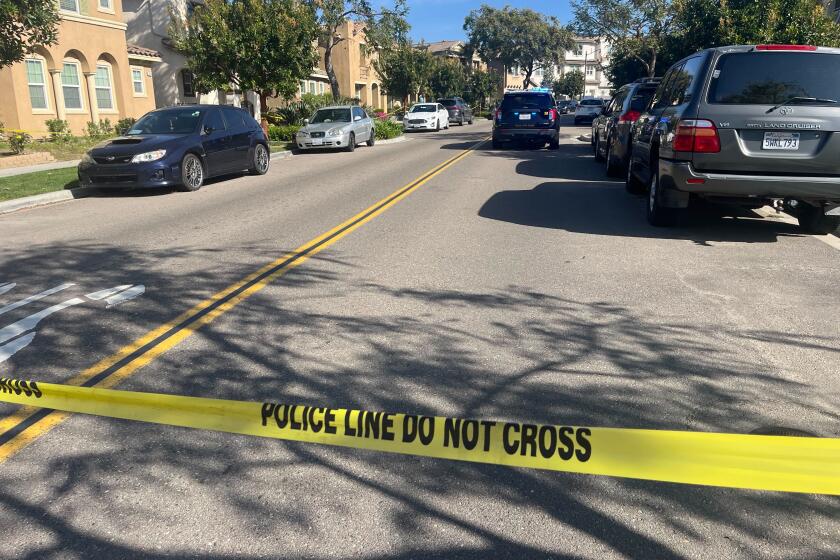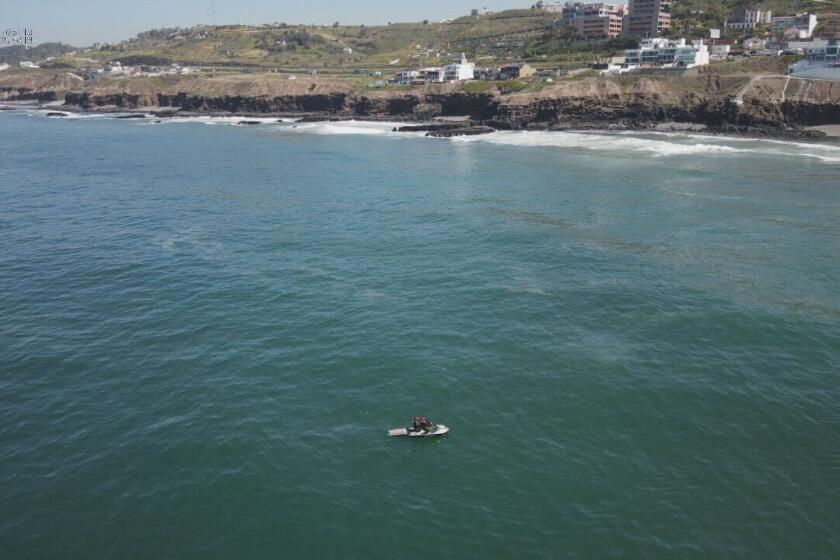Central Americans ride train to Mexicali
By the time they reached Baja California’s desert capital, the two migrants from Honduras had already endured much: Tropical downpours in Veracruz, scorching heat in Sonora, gunmen demanding money, a dangerous ride spent largely atop freight trains that carried them across Mexico.
But Brayan Rosa and Oscar Umazor, friends from the city of Tegucigalpa, said they had yet to be dissuaded from their final goal: Making it past border surveillance into the United States.
“There’s so much crime in my country, it’s all the same being here as facing the dangers as over there,” Rosa, a 26-year-old former university student, said in an interview three days after arriving in Mexicali. “I am going to pursue a dream. If I stay there, I will always be in danger, and badly off economically.”
The Ferromex train that transports cars, cement, fertilizer, steel, diesel fuel and other supplies from the center of Mexico to the Baja California border has also been carrying stowaways like Rosas. And Mexican officials are now promising a crackdown.
The Central American presence in Mexicali is only a fraction of what is being reported along Mexico’s northeastern border with the Rio Grande Valley in Texas, which has seen tens of thousands of Central Americans in recent months — as well as an unprecedented numbers of unaccompanied minors.
Still, Mexicali also has witnessed a rise in arrivals from Central America in recent months, mostly adult men, according to the migrant shelters in the city. Though the train trip from the Guatemalan border to Mexicali entails several more days of travel than the ride to the Mexican border cities of Nuevo Laredo and Reynosa across from southern Texas, migrants said it offers a safer path — one that leaves them less likely to be victimized by criminal groups linked to the Los Zetas drug-trafficking organization.
“Over there, they kill you, they kidnap you. It’s less dangerous here,” Umazor, 25, a former technical school student, said one night last week at Casa del Migrante Betania, a 40-bed shelter in a quiet, working-class neighborhood near the tracks.
Like several others interviewed, he cited a combination of reasons for leaving Honduras — violence and lack of economic opportunity. He hoped to find a job in the United States to support the wife and 1-year-old daughter he left behind.
North of the border, U.S. officials have seen only a slight increase in Central Americans crossing into Imperial County, where summertime temperatures of 110 degrees make the crossing a high-risk endeavor. “It’s the worst time to cross,” said Ronnie Martinez, assistant special agent in charge for U.S. Customs and Immigration Enforcement in Calexico. “These journeys are dangerous, and despite what they’re being told by smugglers that it’s easy to get here, there’s violence and all kinds of things that go on.”
Though Central Americans are not categorized separately, the U.S. Border Patrol reported that apprehensions of non-Mexicans in the El Centro Sector rose to 1,450 to date this fiscal year, compared with 846 for the same period last year. The numbers are still a fraction of the Mexicans detained: 9,801 through the end of June and 12,438 for the same period in fiscal 2013.
In Mexico, top officials in President Enrique Peña Nieto’s administration have pledged a series of actions to stem the flow of Central American migrants heading for the U.S. border. This includes a promise to prevent stowaways from riding the freight trains, which are collectively nicknamed “La Bestia” — “The Beast.”
“We’re going to establish order. We cannot allow them to continue to risk their lives,” Miguel Osorio Chong, Mexico’s interior minister, said in a radio interview this month. He added that details would be forthcoming.
Central Americans have been arriving in Mexicali for years, but their presence in the area has become an increasingly public issue in recent months. The city of close to 1 million people has already been struggling with large numbers of deportees from the United States: More than 48,000 Mexicans were deported from the United States through Mexicali last year, more than in any other Mexican border city, according to Mexican government figures.
“We’re under fire from both directions,” said José Félix Arango Pérez, secretary for Mexicali’s municipal government. “We have the deportees from the United States, who end up staying or trying to cross back at the first opportunity,” he said in an interview at City Hall. “And we have those who are coming up from the south to cross (into) the United States and end up getting stuck here for months.”
Federal aid is available to help Mexican migrants in Mexicali, including subsidies for their return trips to their hometowns, said the Rev. Gamael Vargas, pastor at San José Obrero Catholic Church near downtown Mexicali. But there are no public funds for the Central Americans — and that has made their presence a topic that often goes unaddressed.
“The government is not openly touching the subject,” said Vargas, who is also the Mexicali Archdiocese’s director of the social service organization Caritas, which serves free lunches to migrants at Comedor Buen Samaritano.
Most shelters offer limited stays, usually three to four days. But Hotel del Migrante does not set a limit, only requiring that residents perform chores or panhandle near the border crossing to Calexico to help offset the cost of their stay. Operated in what was an abandoned hotel, the shelter has recently opened a separate section for Central Americans, where close to 40 were registered on Thursday.
Casa del Migrante Betania’s figures help quantify the trend: Since 2011, the number of Central Americans registered there has risen steadily — from 1,736 in 2011 to 2,706 in 2013.
Director Jorge Verdugo said that the Central American arrivals often arrive dirty, hungry and dehydrated at his shelter after days on the train: “First thing we do is prepare large jars of water, to hydrate them.”
In June, Mexico’s National Migration Institute detained more than a dozen Hondurans hiding in the community of Algodones east of Mexicali. This month, police authorities in the Mexicali Valley came across a group of 70 people, mostly Hondurans and including infants, walking by the side of the road near the community of Estación Delta, according the newspaper La Cronica.
Migrant protection groups have denounced the public detention of Central American migrants and “raids on the freight train arriving in Mexicali,” according to a statement this month by the Coalición Pro-Defensa del Migrante, A.C. “The results are always detention of Central American migrants who are coming to our state with intentions of crossing to the United States.”
Rodulfo Figueroa Pacheco, head of Mexico’s National Migration Institute in Baja California, said riding the freight train is both illegal and dangerous. “There is no systematic effort to arrest people in the train,” he said, but added, “we would like to inhibit the transit of people on the train. ... There’s been an absence of enforcement in the past, and today we are enforcing the law.”
sandra.dibble@utsandiego.com (619) 293-1716 Twitter: @sandradibble
Get Essential San Diego, weekday mornings
Get top headlines from the Union-Tribune in your inbox weekday mornings, including top news, local, sports, business, entertainment and opinion.
You may occasionally receive promotional content from the San Diego Union-Tribune.

